Rabbit Air BioGS 2.0 Review
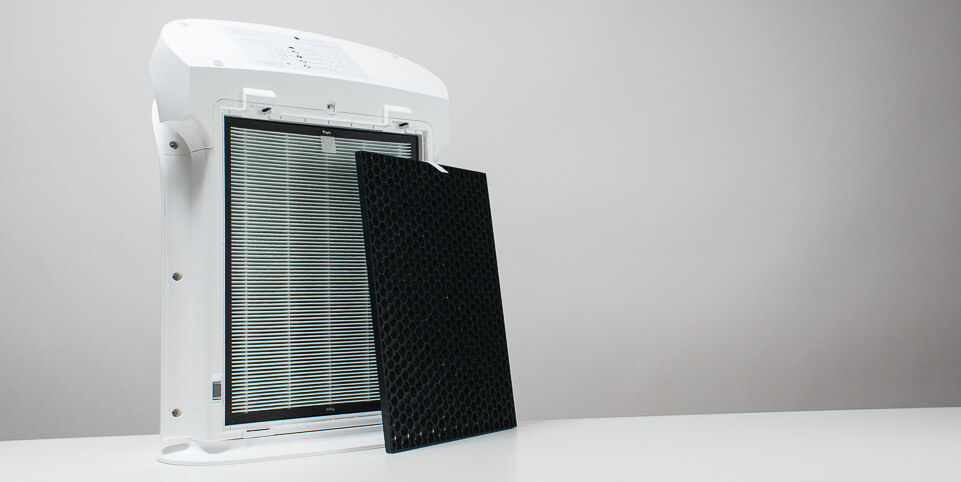
Feature Scores
Pros
- HEPA filter for particle filtration
- Proper pre-filter to remove large particles before they reach HEPA filter
- Carbon filter with actual carbon pellets provides greater surface area for better adsorption of gases
- Great build quality, 5 year warranty, excellent customer support
- Great aesthetics
Cons
- CFM not high enough to be used effectively in larger rooms (300 sq. ft.) which makes this an approx. $400 unit for smaller rooms (150 to 250 sq. ft.)
Editor's Score
Quick Facts
| Particle filter type | HEPA |
|---|---|
| Gas filter type | Carbon |
| Pre-Filter | Separate dedicated pre-filter |
| Output | Approx. 190 CFM |
| Air Movement | pre-filter > carbon filter > HEPA filter |
| Number of fan speeds | 5 |
| Size | 21.5 in. tall x 15 in. wide x 8.5 in. deep |
| Weight | 16 lb. |
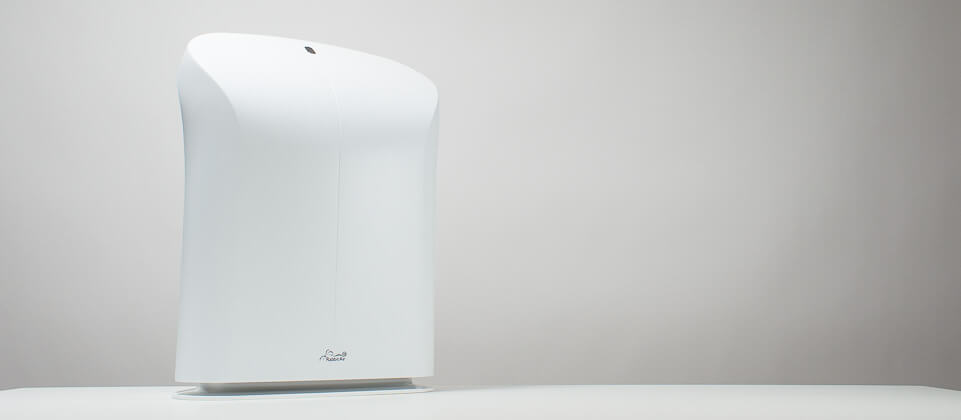




Analysis
A step by step breakdown of the BioGS 2.0's performance.
Air Processing Performance
Test Results
In a 150 sq. ft. test environment the BioGS 2.0 was able to lower room particle concentration from 10,000 particles per cubic ft. (relatively “dirty” air) down to 1,000 particles per cubic ft. (what we consider “clean” air) in 15 minutes.
This was an expected result considering the unit’s particle filter type (true HEPA) and output (approx. 190 CFM). Units with the same particle filter type and greater output were slightly faster. For example, the Winix 5500-2 (true HEPA) took only 9 minutes. The Coway Mighty (true HEPA) took 10 minutes. Both the Winix and Coway are approx. 250 CFM units. Thus, they process approx. 60 more cubic feet of air each minute. This is the reason why they cleaned the air in the room about 5 to 6 minutes faster than the BioGS 2.0.
Given 20 additional minutes, the Rabbit Air was able to achieve the lowest particle concentration possible – 100 particles per cubic ft. (this was as close to 0 as our measuring equipment allowed for). The Winix took 6 additional minutes and the Coway took 13 additional minutes to achieve this ultra-low particle concentration.
Filter Analysis
Particle Filter
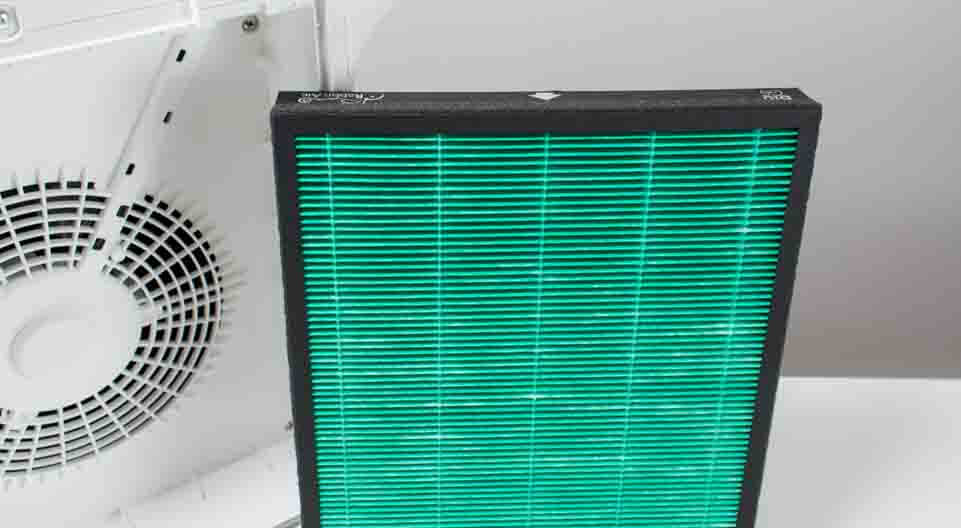
The BioGS 2.0 is equipped with a true HEPA filter for particle filtration. An air purifier removes two different types of contaminants from the air – particles (allergens, mold, etc.) and gases (VOCs, odors). The Rabbit Air’s HEPA filter removes particles while its carbon filter removes unwanted gases.
HEPA is the industry standard for particle filtration. The top rated Winix 5500-2 is equipped with a HEPA filter. So is the Coway Mighty. So is the vast majority of air purifiers over $100.
Under $100 you do see a lot of units with HEPA Type filters and proprietary particle filters. These filters are usually less “efficient” than HEPA filters. HEPA filters have extremely high efficiency – they remove upwards of 99.97% of particles that travel through them. That’s very close to 100%.
The bottom line here is that the BioGS 2.0 has the same type of particle filter as the vast majority of air purifiers on the market – a true HEPA filter. This is a good thing in that HEPA filters are the industry standard and highly efficient. This is also somewhat of a “bad” thing in that the BioGS 2.0 is much more expensive than $150, $200 units that have the exact same type of particle filter (true HEPA) and can therefore remove particles from the air just as effectively.
Gas Filter

The Rabbit Air’s gas filter is comprised of a plastic honeycomb frame that contains thousands of little carbon pellets. These pellets remove unwanted gases from the air by chemically bonding to them as they travel through the filter.
Two types of carbon filters are prevalent on the market – the pellet-based type described above and a second type. The second type is comprised of a fibrous material that is simply coated with carbon. This second type of carbon filter is less effective than the pellet-based type as it provides less surface area for gas adsorption.
The bottom line here is that the BioGS 2.0 has a very good carbon filter. It’s therefore a great choice if unwanted gas removal is a priority for you. Two caveats though: first, you can get an air purifier with a pellet-based carbon filter for much cheaper. The Winix 5500-2, for example, comes equipped with an almost identical pellet-based carbon filter. It retails for approx. $250 less than the BioGS 2.0.
Second, should unwanted gas removal really be a big priority for you, it will only cost you approx. $100 to step up to an air purifier that does it even better. The Austin HealthMate retails for approx. $500 and has at least 10 times as much gas adsorption media (carbon) as the BioGS 2.0.
This large amount of media allows for better gas adsorption on the first pass through the filter and also gives the gas filtration media a much longer life. Remember, carbon removes unwanted gases from the air by bonding to it. Each bonding event saturates the media a little bit more. More media results in more surface area for bonding over time. Thus, the HealthMate’s carbon filter, with at least 10 times more media than the Rabbit Air’s carbon filter, will take at least 10 times longer to saturate (all other variables being equal, of course).
Pre-filter
The BioGS 2.0 comes equipped with a separate dedicated pre-filter. This is quite common for air purifiers over $100.
Budget units don’t have a separate pre-filter. The fibrous carbon filter doubles up as a gas filter and a pre-filter. This is problematic because the carbon pre-filter can saturate very quickly with large particles. It then has to be replaced at cost.
The BioGS 2.0’s separate dedicated pre-filter can be vacuumed and/or rinsed. It never has to be replaced at cost. This means you can place the air purifier in a room absolutely loaded with large particles and still be able to run it very cost-effectively. In this scenario, the pre-filter will quickly saturate with large particles but can be cleaned at no cost. The HEPA filter never has to capture large particles and therefore will last much longer.
Again, this is a very good feature for the air purifier to have – a separate dedicated washable pre-filter makes a big difference in keeping replacement filter costs low. However, it isn’t a very unique feature once you go past spending $100 on an air purifier. The Winix 5500-2 and Coway Mighty, approx. $150 to $200 units, both have a separate dedicated washable pre-filter just like the BioGS 2.0.
So, in summary, the BioGS 2.0 has very good filters – a true HEPA filter, a pellet-based carbon filter, and a separate washable pre-filter. The only issue is that you can get the exact same filters and therefore the exact same filtration quality in a much cheaper air purifier. The Winix 5500-2 has the exact same set of three filters. The Coway Mighty has a true HEPA filter and separate washable pre-filter but it does have a lesser carbon filter – the fibrous coated kind we described above.
Air Movement
The BioGS 2.0 outputs at approx. 190 CFM. This gives it sufficient output for a room up to about 250 sq. ft.
Do not buy this air purifier thinking its higher price equates to a greater area of coverage. This unit actually covers a lesser area than many other less expensive options. The Winix 5500-2 and Coway Mighty both output at approx. 250 CFM and can therefore service a room up to about 300 sq. ft.
Also note that the unit’s maximum area of coverage – 250 sq. ft. – requires that it be run on maximum fan speed. On max. fan speed the unit is quite loud. On lower fan speeds it runs more quietly but the output and therefore area of coverage is drastically reduced. For example, on its lowest fan speed you can barely hear the air purifier putting your ear right up to it. It’s whisper quiet. But it only outputs at approx. 30 CFM. This is not sufficient output for even the smallest bedroom.
Energy Efficiency
In order to evaluate an air purifier’s energy efficiency we look at its CFM/watt ratio. How much output (CFM) does it provide for each watt of power it draws?
The BioGS 2.0 has fairly good CFM/watt ratios across the board – that is to say, on all fan speeds.
On its highest fan speed it draws 37.5 watts of power and outputs at approx. 190 CFM for a CFM/watt ratio of 5. For comparison, the top rated Winix 5500-2 draws 54.8 watts but outputs at approx. 250 CFM on the same setting for a ratio of 4.6. Budget air purifiers in the sub-$100 range have a ratio between 2 and 3, for the most part. The most energy efficient air purifier we’ve tested so far, the Coway AirMega 400 had a ratio of 6.9.
On lower fan speeds ratios improve. The BioGS 2.0 has a ratio of 7.5 on its lowest fan speed. Its power draw is a measly 3.5 watts but it outputs very little, otherwise its ratio would be even better. Top rated units are even more energy efficient on low fan speeds. The Winix 5500-2 has an 11.9 ratio on its lowest fan speed and the Coway Mighty has an impressive 19.9 CFM/watt ratio on its lowest fan speed.
In summary, the BioGS 2.0 is highly energy efficient although there are even more energy efficient options on the market.
Noise Output
In order to evaluate noise output we use another ratio - CFM/dB.
At a glance, the BioGS 2.0 appears to be a fairly quiet air purifier. On its highest fan speed it maxes out at 60.2 dB. This is quite a bit less than the 67.5 dB of the Winix 5500-2 or the 66.1 dB of the Coway Mighty on the same setting (max fan speed).
Taking CFM into account, the 60.2 dB number is much less impressive. Recall the unit’s approx. 190 CFM. This gives it a CFM/dB ratio of 3.2 on its highest fan speed. The Winix and Coway both ouput at approx. 250 CFM for a CFM/dB ratio of 3.7 and 3.8, respectively. Thus, the Winix and Coway are quieter than the BioGS 2.0 when taking into account their output despite the fact that the Rabbit Air has a lower raw dB noise output.
On lower fan speeds the Rabbit Air’s raw dB numbers are also impressive. But again, they’re offset by the corresponding low output.
In summary, the BioGS 2.0 is a very quiet air purifier on all settings. It doesn’t produce a lot of noise. But the price to pay for that is lower output and therefore less area of coverage. If you’re looking for the quietest air purifier on the market only taking into account raw dB numbers, the BioGS 2.0 is certainly in contention for that title. However, once you take the broader perspective of also taking into account output, there are better options out there, including top rated 250 CFM units like the Winix 5500-2 and Coway Mighty.
Durability
The Rabbit Air BioGS 2.0 is certainly one of the more durable air purifiers on the market. It’s built using exceptionally high quality parts with tremendous design and workmanship.
Everything from its blue braided power cable to the brushless motor that powers its fan is very high quality. The unit also comes with a 5 year warranty.
The only negative we’ll mention here is the placement of the unit’s carrying handle. Most other air purifiers on the market output through a grille on the top of the unit behind its control panel. The BioGS 2.0 outputs through a wedge shaped outlet on the top and slightly to the back of the unit. This wedge shaped outlet is very easy to misconstrue for the part of the air purifier where it should be picked up. The actual handle is very small and sits underneath the very large wedge shaped outlet. During testing we found ourselves repeatedly trying to pick up the air purifier by the wedge shaped outlet instead of the actual handle pocket.
The build quality and quality of materials used for the BioGS 2.0 is definitely a cut above those used for less expensive units like the Winix 5500-2 and Coway Mighty. Is it enough of a difference to justify the much higher cost of the Rabbit Air? Definitely not. But there definitely is a difference.
Ease of Use
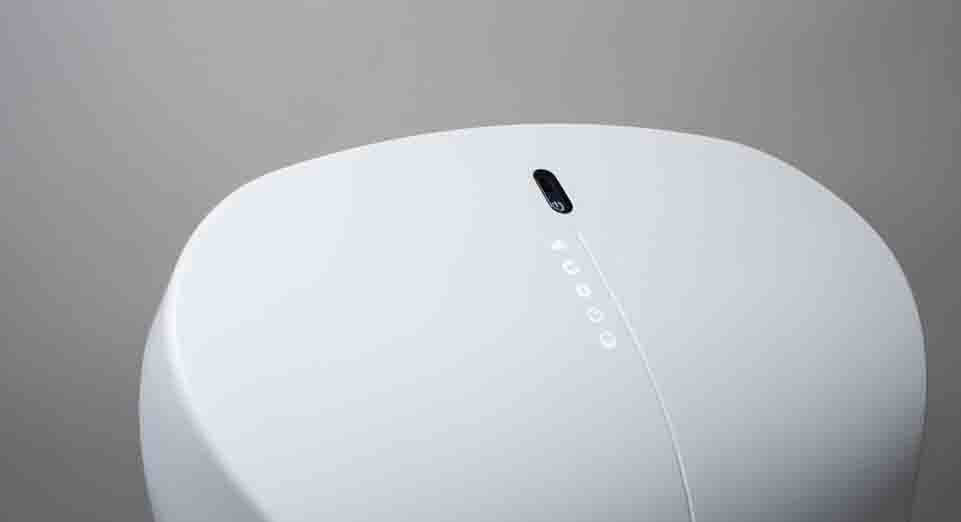
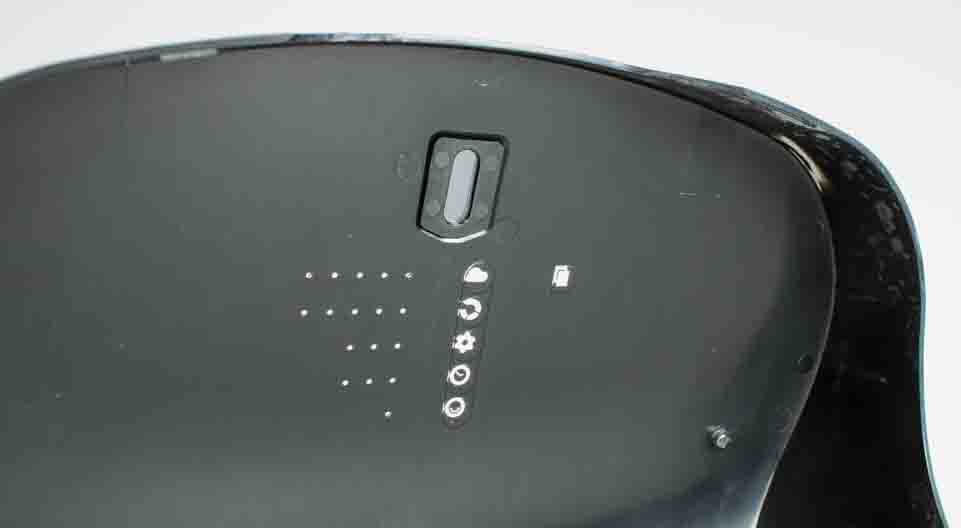
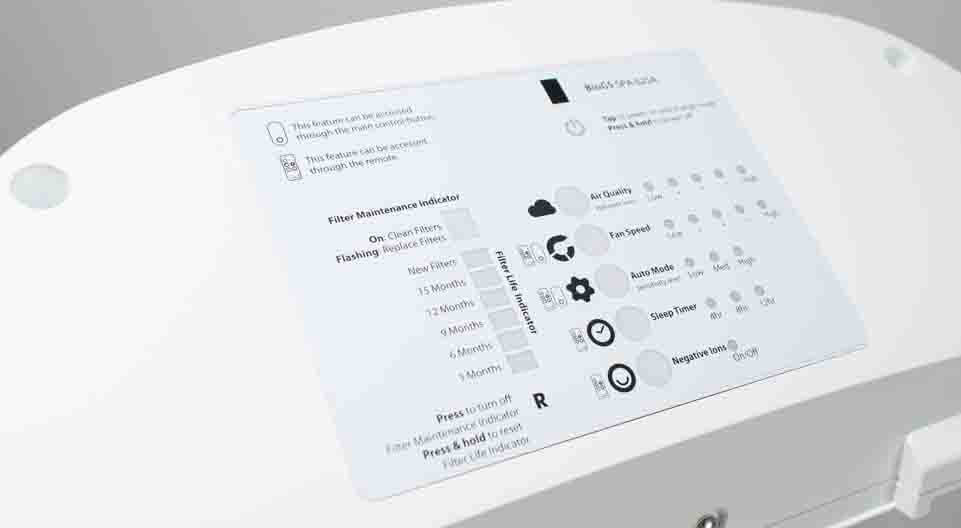
The control panel LEDs on the BioGS 2.0 are mostly white in color and not very pronounced (to match its minimal design) but they cannot be turned off. This is a disappointment considering the unit’s approx. $400 price tag.
Unfortunately, this is a common issue among the air purifiers we’ve tested so far. Many have control panel LEDs that cannot be turned off. The Winix 5500-2 and Coway Mighty suffer from the same issue. The difference is that those units are in the $150 to $200 (approx.) range and their aesthetics is not a major selling point. Thus, taping over their control panel LEDs is a reasonable option to correct the issue. This really isn’t an option for an approx. $400 air purifier with aesthetics as a major selling point.
If being able to turn all control panel LEDs completely off is a priority for you, the Rabbit Air MinusA2 SPA-780N does have this functionality, although it’s more expensive. Surprisingly, many budget air purifiers have this option but they’re also not very good air purifiers otherwise. The truth is that we’ve yet to find a very good all-around affordable air purifier with control panel LEDs that can be completely turned off.
The BioGS 2.0 weighs about 16 lb. Between its weight and dimensions it’s just about the same size and weight as the Winix 5500-2. At this size and weight both units are highly portable and not very large. Either unit can easily be used in even a small bedroom and either unit can easily be moved from one room to another. Do note the BioGS 2.0’s handle issue we talked about earlier.
The BioGS 2.0 does come with a timer that can be set to 4, 8, or 12 hours. A timer is a fairly standard feature in the industry. Both the Winix and Coway also come with a timer.
The BioGS 2.0 also comes with a remote control. This is a much less common feature. Most budget air purifiers don’t come with a remote. The Winix 5500-2 is one of very few air purifiers in its price range that comes with a remote. The Coway Mighty does not.
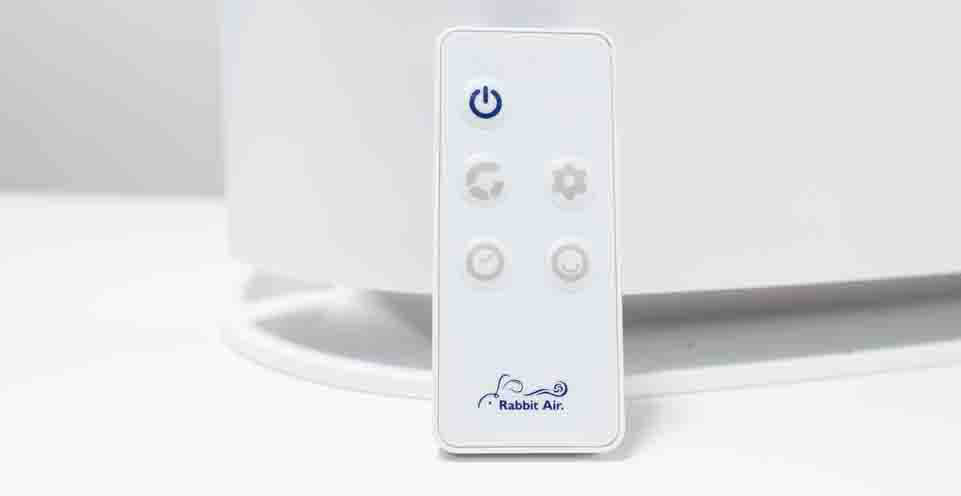
The Rabbit Air BioGS 2.0 does lack smart functionality. Again, this is a disappointment only because of its price point. At approx. $400 wireless functionality is expected and it is not included with this air purifier. Neither the Winix 5500-2 nor the Coway Mighty come equipped with this functionality but they’re much cheaper air purifiers.
At approx. the same price as the BioGS 2.0 both the Coway AirMega 400s and especially the 300s are tenable. Both units can be controlled via an app on your phone. At a slightly higher price point the MinusA2 SPA-780N also has this functionality. We would have definitely liked to see wireless app control implemented in the BioGS 2.0 as it would have gone a long way in justifying its higher price point.
Value
The BioGS 2.0 is a very expensive air purifier. It retails for approx. $400. Again, the Winix 5500-2 and Coway Mighty fall in the approx. $150 to $200 range. Either unit has greater output (higher CFM) and offers exactly the same large and small particle filtration quality as the Rabbit Air (washable pre-filter and HEPA filter). The Winix also offers exactly the same gas filtration quality (pellet-based carbon filter).
Things get even worse for the BioGS 2.0 when you take into account long term costs. A filter set for this unit costs upwards of $90 (approx.). Compare this amount to $40 to $60 (approx.) for a filter set for the Winix or Coway. The Winix and Coway are also more energy efficient, especially on lower fan speeds.
Why then, would you every consider buying the BioGS 2.0? We can give two reasons:
It’s a very high quality air purifier that should last a very long time.
Again, the quality of materials and workmanship used to manufacture this air purifier is much higher that of most other air purifiers on the market. And the quality is also better than that of the Winix or Coway.
Aesthetics.
The BioGS 2.0 offers a very modern minimalist aesthetic. It looks different – and many would say it looks better – than most other air purifiers on the market.
Are these enough reasons to purchase the BioGS 2.0 over something like the Winix 5500-2? No, we don’t believe they are. But, they are reasons nonetheless and if durability and aesthetics are overwhelming priorities for you, this Rabbit Air air purifier certainly won’t disappoint.
Add a Comment
Have a question or comment? Let us know below.

Comments